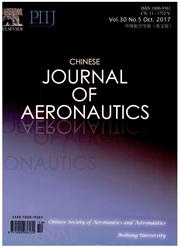

 中文摘要:
中文摘要:
这篇文章介绍人工的神经网络(ANN ) 的二种新类型反应表面方法(RSM ) :ANN RSM 基于早停止技术(ANNRSM-1 ) ,和 ANN RSM 基于规则化理论(ANNRSM-2 ) 。下列改进被做到常规 ANN RSM (ANNRSM-0 ) :1 ) 由在训练过程期间监视确认错误, ANNRSM-1 决定早停止的点并且训练在早停止的点停止点,和重量向量,它与最佳的归纳对应于 ANN 模型,最后作为训练结果被归还;2 ) 根据规则化理论, ANNRSM-2 由把网络重量的广场的和加到它修改常规训练性能函数,当训练错误减少时,网络重量因此被强迫有更小的值。测试证明 ANN RSM 的表演变得好一些由于上述改进:首先, ANNRSM-1 和 ANNRSM-2 比 ANNRSM-0 更精确地接近到限制状态功能(LSF ) ;第二, ANNRSM-1 和 ANNRSM-2 给的估计的失败可能性比由 ANNRSM-0 获得了的有更小的错误;第三与 ANNRSM-0 相比, ANNRSM-1 和 ANNRSM-2 要求数据取样完成稳定的失败概率的许多少数结果。
 英文摘要:
英文摘要:
This article presents two new kinds of artificial neural network (ANN) response surface methods (RSMs): the ANN RSM based on early stopping technique (ANNRSM-1), and the ANN RSM based on regularization theory (ANNRSM-2). The following improvements are made to the conventional ANN RSM (ANNRSM-0): 1) by monitoring the validation error during the training process, ANNRSM-1 determines the early stopping point and the training stopping point, and the weight vector at the early stopping point, which corresponds to the ANN model with the optimal generalization, is finally returned as the training result; 2) according to the regularization theory, ANNRSM-2 modifies the conventional training performance function by adding to it the sum of squares of the network weights, so the network weights are forced to have smaller values while the training error decreases. Tests show that the performance of ANN RSM becomes much better due to the above-mentioned improvements: first, ANNRSM-1 and ANNRSM-2 approximate to the limit state function (LSF) more accurately than ANNRSM-0; second, the estimated failure probabilities given by ANNRSM-1 and ANNRSM-2 have smaller errors than that obtained by ANNRSM-0; third, compared with ANNRSM-0, ANNRSM-1 and ANNRSM-2 require much fewer data samples to achieve stable failure probability results.
 同期刊论文项目
同期刊论文项目
 同项目期刊论文
同项目期刊论文
 期刊信息
期刊信息
